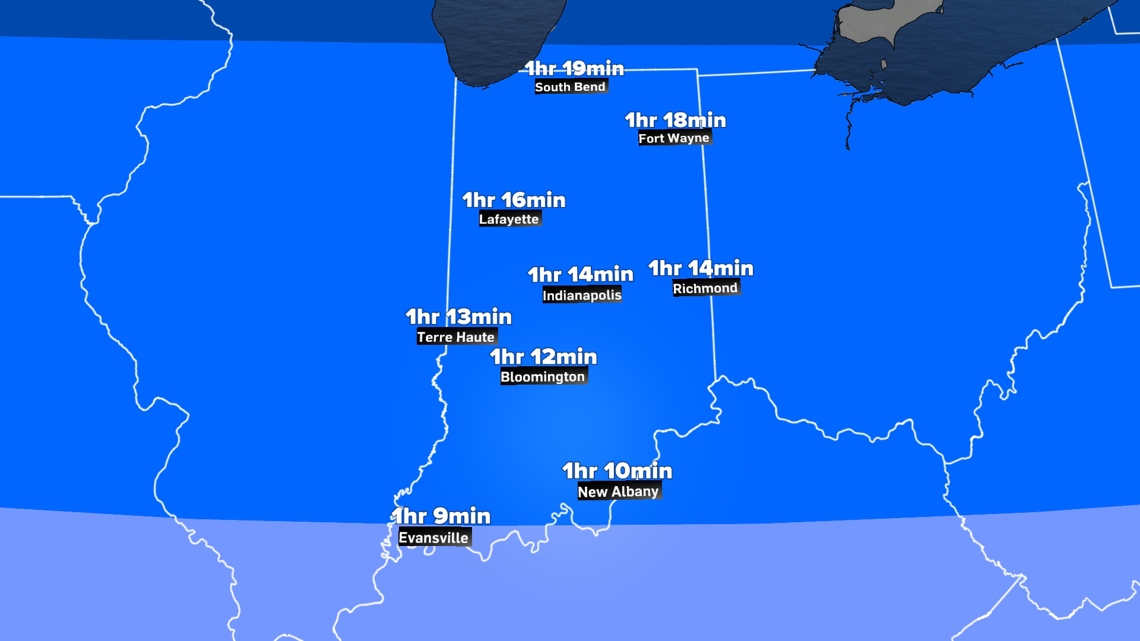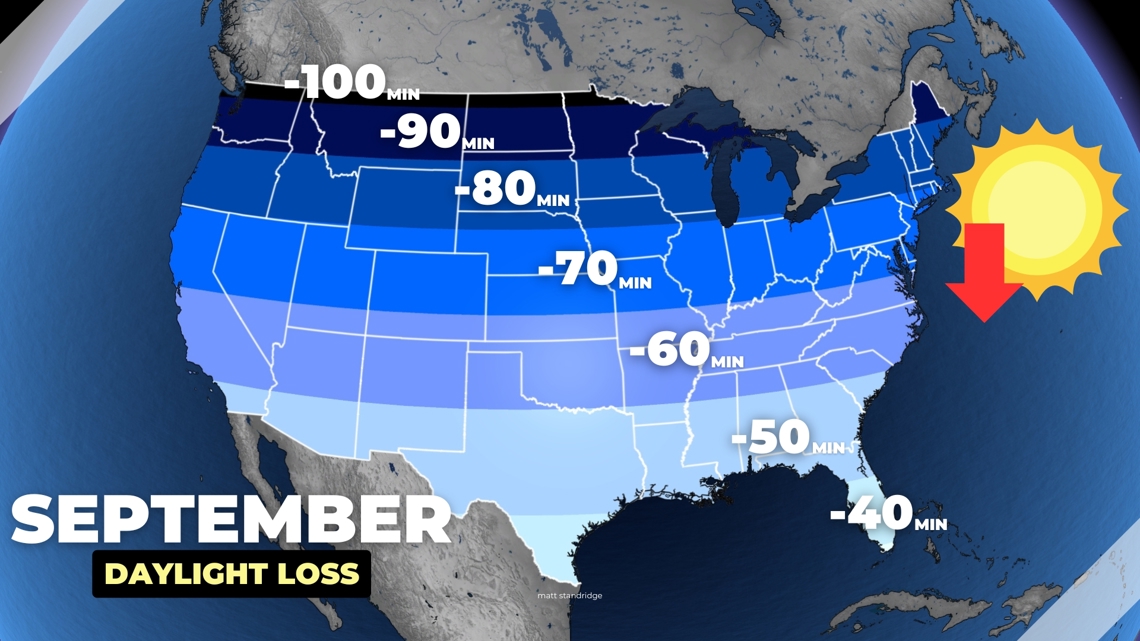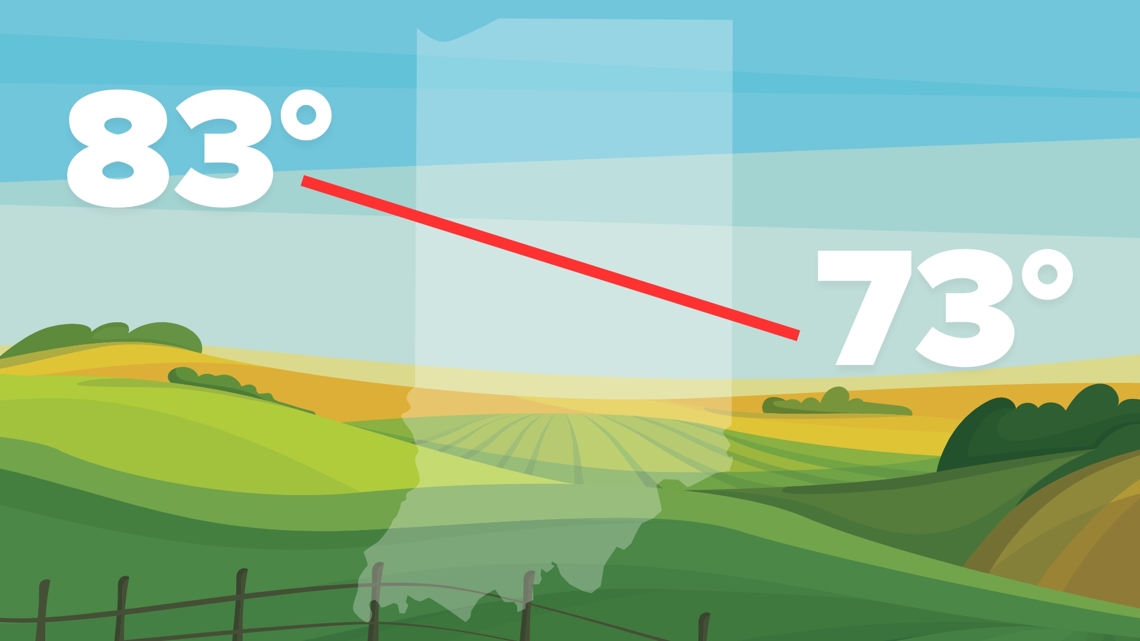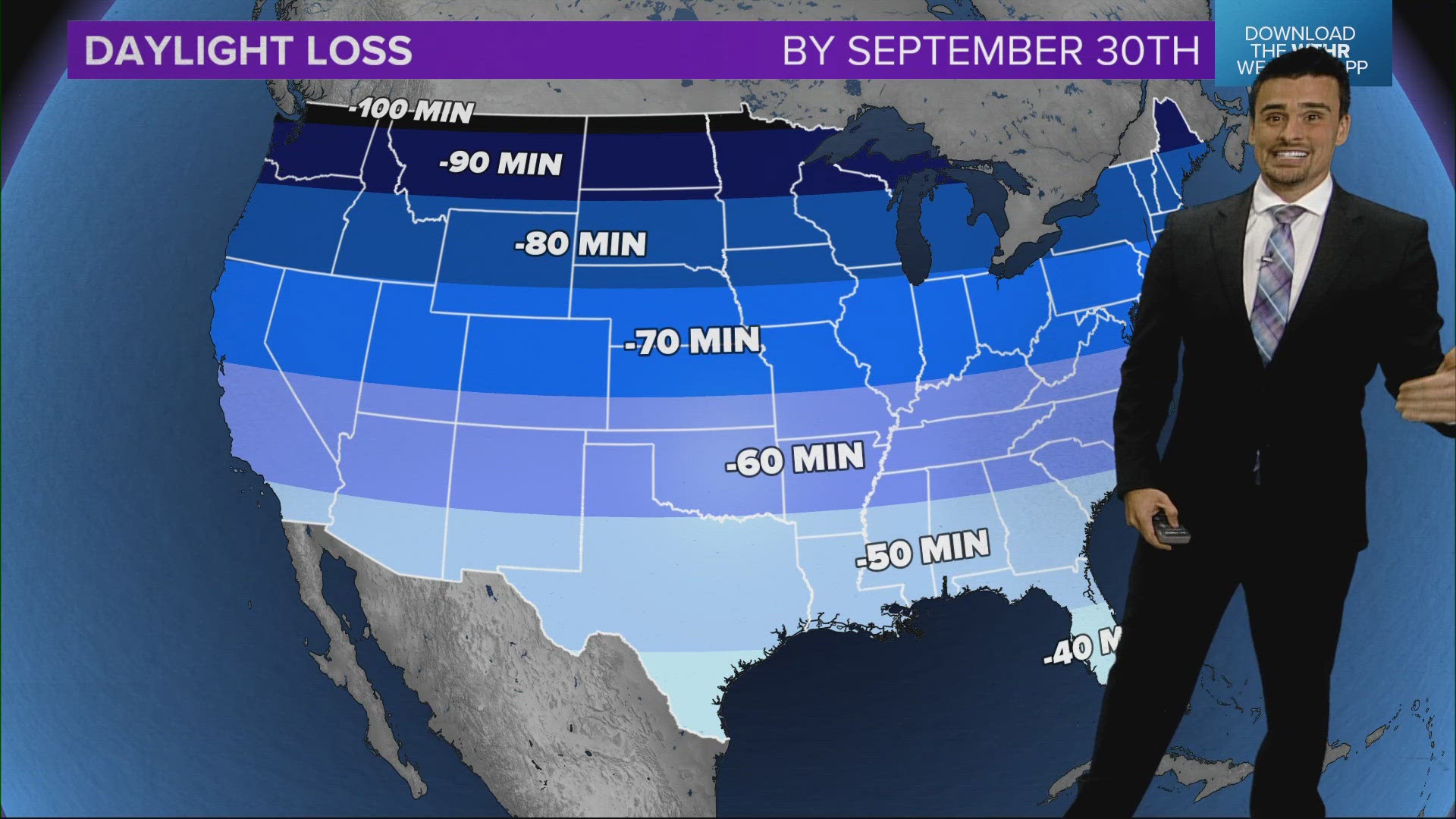INDIANA, USA — Fall starts officially at 8:43 a.m. EDT Sept. 22 this year. That means cooler days, more sweaters, more hot drinks and longer nights are on the way. In fact, September is always the biggest month for daylight losses of the year. The speed at which we lose daylight peaks.
In Indiana, we are losing more than 2.5 minutes of daylight most days during the month of September. Starting in October, the pace of daylight losses will decrease.
Tap HERE for your latest Indiana weather forecast.
Daylight
The days are getting shorter. It's a little more noticeable every single day. We will continue to lose daylight all the way to the winter solstice, which is a few days before Christmas. However, the speed of daylight losses is not equal all year. In fact, it changes every single day. September brings the biggest daylight loss of the entire year.
In Indiana, from Sept. 1 to Sept. 30, we will lose over an hour of daylight. That equals to roughly 2.5 minutes per day.


Northern Indiana always has the biggest swings in daylight, thanks to their higher latitude.
That is true for all the northern states as well. The farther north you go, the more daylight you will lose for the month of September.


This map shows you how many minutes you will AT LEAST lose this month.
Those who live within 40 miles of the U.S.-Canadian border will lose over 100 minutes (almost two hours) of daylight in September alone.
Parts of Alaska will lose over 250 minutes of daylight this month (7-9 minutes per day).
Equilux
A few days after the fall equinox, we will have the equilux. Because of how light bends around the Earth, the day of equal day and equal night will be around Sept. 25. After that day, our nights will be longer than our days.
How will the weather be impacted?
Now that we will have significantly less daylight, our temperatures will start to change more, too. Lower sun angles will bring us gradually cooler air. Cold fronts will get stronger and stronger as colder air is able to pile up in Canada and dive south. There will still be a lot of warm days, too.
In Indiana, average highs will start in the 80s and drop to the 70s during the month of September.


September is also one of our drier months. We typically get just over 3 inches of rain by Sept. 30.


So far for 2024, the month is looking a bit drier than normal. The crops may dry out a little faster than normal in some spots.

